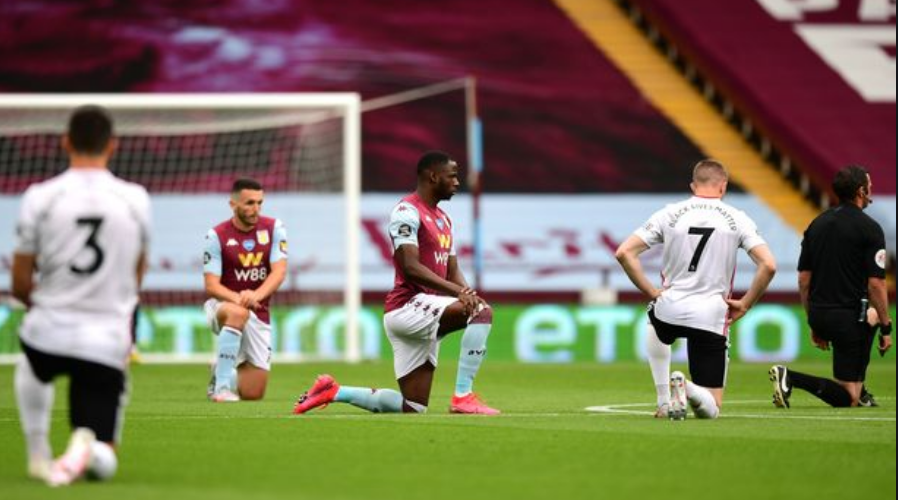Symbols. They’re important. They have the power to change things – sometimes for the better, sometimes for worse.
They’re a potent weapon in advertising.
Think of the Coca-Cola red lorry at Christmas, and Santa.
Think of the Nike swoosh.
Think of the Apple logo.
Think of the Asda ‘pocket tap’
And, while not a logo, think how Mastercard is synonymous with ‘Priceless’.
But – shock, horror – advertising isn’t everything, and there are symbols outside of this that resonate and travel further than any logo could.
I’m talking about the taking of the knee before UK football (soccer – for my one American reader) games.
It means something. More than just a quick gesture.
I keep hearing (from some quarters); ‘enough is enough’…. ‘it’s done its job now’… ‘why are they still doing it?’
But racism hasn’t gone anywhere – it’s still here – so why should the taking of the knee go away?
In fact, only recently did players and staff walk off the pitch, during a Champions League game, after a racist incident.
And, more importantly, it gets people talking. They forget about the few seconds after the whistle has blown, when players take the knee, so it’s either a surprise or there’s a roll of the eyes – maybe a comment about ‘haven’t they done this enough now?’
Either way, it sparks a conversation.
And it sparks a conversation in another way.
The football team you support is passed down, generally, from father to son/daughter (sometimes mother to son/daughter, or from both parents, but generally from father to son/daughter).
Son/daughter will watch their team with their father – especially at the moment, when all games are on TV as no one can go to live games.
When that kick-off whistle goes and there’s the momentary pause as players take the knee, that’s when little Jimmy/Jane pipes up; ‘Daddy, what are they doing?’
This is the perfect opportunity. You can’t condense it down into something as simple as ‘it’s against racism’ or ‘it’s to do with Black Lives Matter’ – a 7-year-old won’t have a good enough grasp of these subjects. They need context.
This means you have to explain that it’s a stand against racism and exactly what racism is. You may even need to explain that it started in America and what’s happened there – maybe without the graphic violence.
It’s a chance for a child to learn something, learn why people are protesting, and why protesting – and symbols – work.
It’s something I can see continuing for at least the rest of the season.
And the more it happens, the more questions are asked. The more questions are asked, the more people (children in particular) learn. That can’t be a bad thing.
It just goes to show how powerful – particularly in the right context – a symbol can be.
